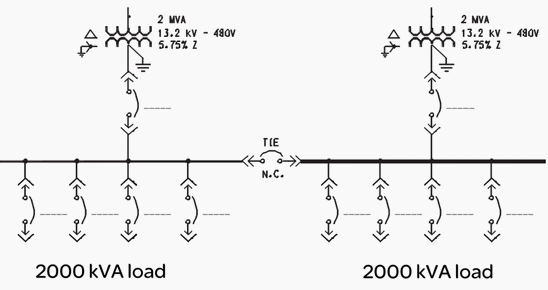Principles of transformer paralleling
Electrical systems have been using paralleled transformers for many years. Electrical utilities are ideal examples of these applications. Their main objectives are reliability and power quality along with keeping consumers on-line.

Utility power engineers understand very well the operation of paralleling transformers when it comes to load sharing between transformers and when circulating currents exist.
Many times auto-tap transformers are used to adjust voltage levels due to loading conditions. Often times these tap changes produce circulating current in parallel-operated transformers.
However, as systems change over time, and transformers are replaced or added, then users need to know the impact of paralleling transformers with different parameters.
This article will address the following when paralleling transformers //
- Principles of Paralleling
- Limiting Conditions
- Equal Impedances – Equal ratios – Same kVA
- Equal Impedances – Equal ratios – Different kVA
- Unequal Impedances – Equal ratios – Same kVA
- Unequal Impedances – Equal ratios – Different kVA
- Unequal Impedances – Unequal ratios – Same kVA
- Unequal Impedances – Unequal ratios – Different kVA
- Delta-Delta to Delta-Wye
Transformers connected in parallel have the same voltage on the primary and the secondary winding terminals. The difference in the voltage between the primary and secondary windings is the turns ratio.

For these terminal voltages to be the same for the paralleled transformers their impedance drop must be identical. Therefore, under any condition of load, the current will be divided such that the product of impedance and current in one transformer is equal to the product of impedance and current in the other.
Also, if the turn ratios of the transformers are different, but the primary and secondary terminal voltages are the same in both transformers, then circulating currents must be flowing between the transformers even at no load.
| Title: | Loading Considerations When Paralleling Power Transformers – Schneider Electric |
| Format: | |
| Size: | 493 KB |
| Pages: | 17 |
| Download: | Right here | Video Courses | Membership | Download Updates |


